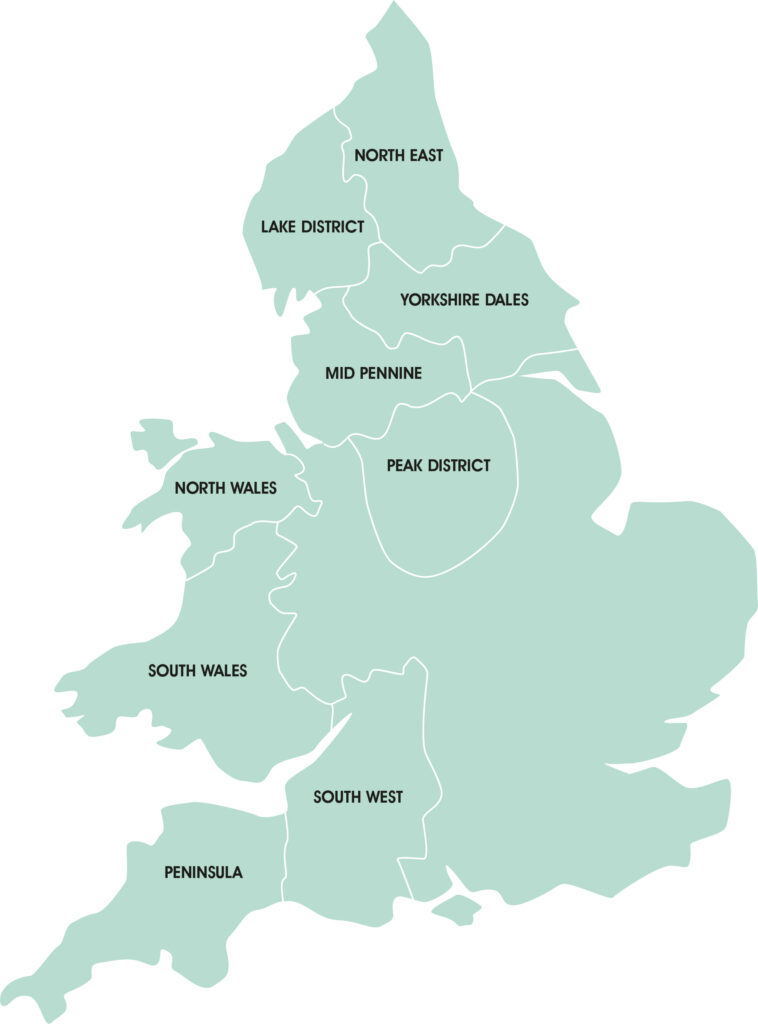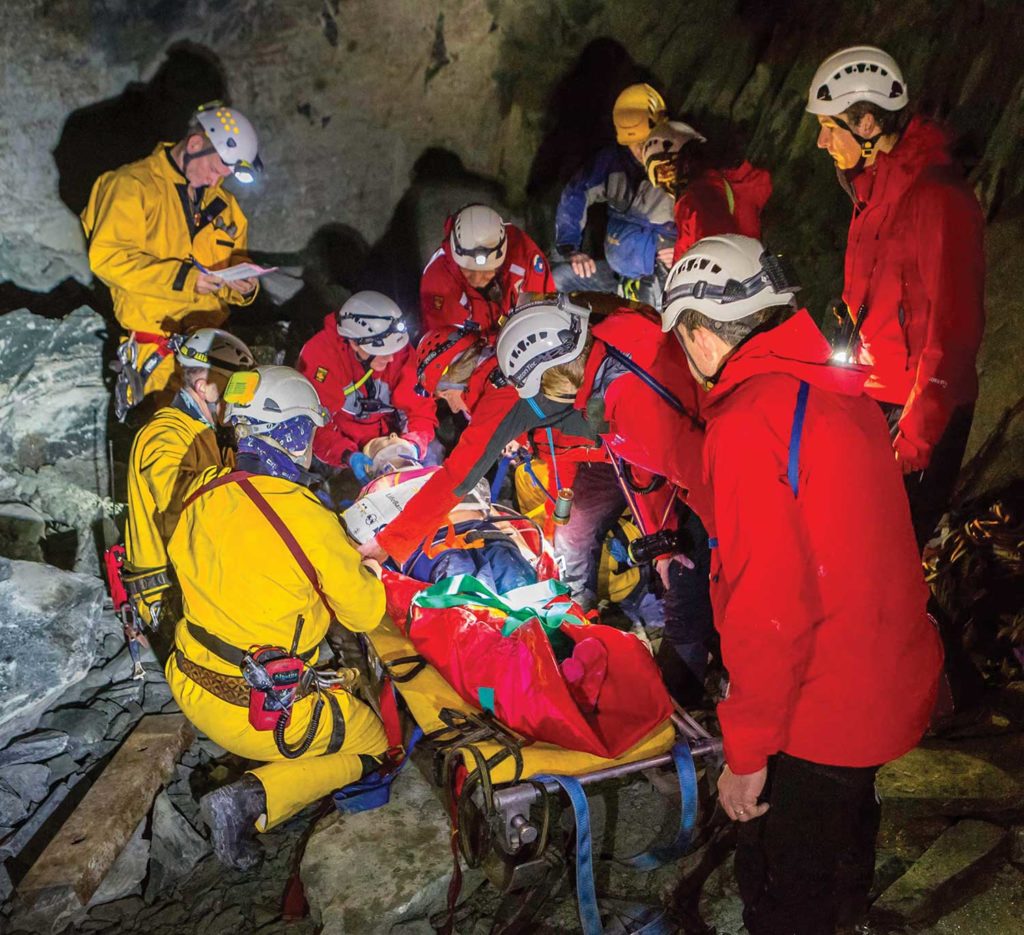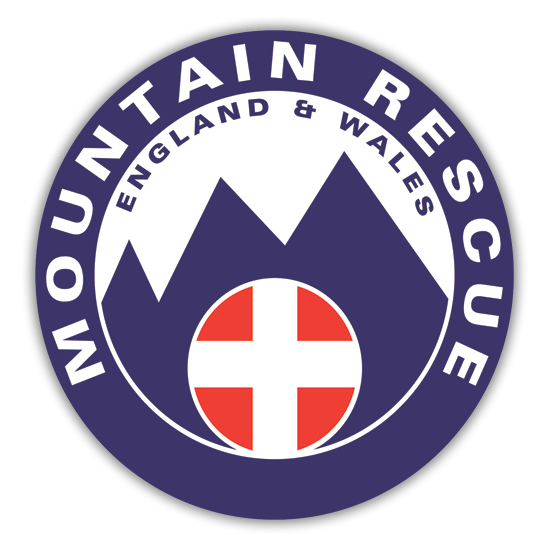Fact File 1: About us
© Daryl Garfield
Greater than the sum of its parts: Mountain Rescue England and Wales (MREW), its member teams and regions

Q: Mountain rescue is carried out at the point of need, so how do the regions and MREW fit in?
Mountain rescue teams are clustered within a number of mountain and moorland areas across England and Wales. Each team has an operational ‘patch’ — loosely dictated by geography — but teams often work together outside their immediate area.
Each team is a charity in its own right. Teams make their own decisions about how to operate rescues, what kit to buy and what training to undertake relevant to the nature of terrain and the type of rescues they are likely to be called to. They also raise their own funds.
There are 49 mountain rescue teams in total – 38 in England and 11 in Wales.
With the exception of South West England, each of the nine geographical regions comprises a regional body and its constituent member teams, each operating as independent charities.
Mountain Rescue England and Wales (MREW) is the direct descendant of the Joint Stretcher Committee set up in 1936 to create a mountain rescue stretcher and to support the work of mountain rescue in general. For more history of mountain rescue, see Fact File 2: History. Also a charity, in January 2020, MREW is a CIO (Charitable Incorporated Organisation).
MREW acts as a coordinating body, representing the interests of mountain rescue with the statutory bodies, the Coastguard and at government level.
MREW also actively raises funds which are used to maintain the organisation and support the central provision of training, key items of rescue equipment, relevant insurance policies, publications and marketing initiatives which benefit all the teams.

Q: What are the nine geographical regions?
- Lake District
- Mid Pennine
- North East
- North Wales
- Peak District
- Peninsula
- South Wales
- South West
- Yorkshire Dales.
Q: Who are the member teams in each area?
The Lake District area comprises:
- Lake District Search & Mountain Rescue Association
- Cockermouth
- Coniston
- Duddon & Furness
- Kendal
- Keswick
- Kirkby Stephen
- Langdale Ambleside
- Patterdale
- Penrith
- Wasdale.
The Mid Pennine area comprises:
- Mid Pennine Search & Rescue Organisation
- Bolton
- Bowland Pennine
- Calder Valley
- Holme Valley
- Rossendale & Pendle.
The North East area comprises:
- North East Search & Rescue Association
- Cleveland
- North of Tyne
- Northumberland National Park
- Swaledale
- Teesdale & Weardale.
The North Wales area comprises:
- North Wales Mountain Rescue Association
- Aberdyfi
- Aberglaslyn
- Llanberis
- North East Wales
- Ogwen Valley
- South Snowdonia.
The Peak District area comprises:
- Peak District Mountain Rescue Organisation
- Buxton
- Derby
- Edale
- Glossop
- Kinder
- Oldham
- Woodhead.
The Peninsula area comprises:
- Peninsula Mountain & Cave Rescue Association
- Cornwall East
- Cornwall West
- Dartmoor Ashburton
- Dartmoor Okehampton
- Dartmoor Plymouth
- Dartmoor Tavistock
- Exmoor.
The South Wales area comprises:
- South Wales Search & Rescue Association
- Brecon
- Central Beacons
- Longtown
- Western Beacons.
South West England comprises:
- Avon & Somerset
- Severn Area.
The Yorkshire Dales area comprises:
- Yorkshire Dales Rescue Panel
- Cave Rescue Organisation
- Scarborough & Ryedale
- Upper Wharfedale.
Q: How do the search and rescue dogs work with the mountain rescue teams?
Over and above their regular team training, a number of team members also train as either mountain or trailing search dog handlers (with some undertaking training in both specialties).
The five dog groups within MREW:
- Mountain Rescue Search Dogs England
- SARDA Wales
- SARDA South Wales
- Lake District Mountain Rescue Search Dogs
- NSARDA.
The majority of search dogs are Border collies, although other breeds include the Labrador and German Shepherd Dogs.
The air scenting search dog is trained to locate human scent on the wind, then follow that scent to its source. Scent is carried downwind in a cone shape from the casualty, widening with distance and the dog works up the cone in a zigzag pattern. Dog and handler work within designated search areas and, once having made a ‘find’, the dog will guide the handler towards that spot by ‘indicating’ – usually by barking.
Training to full search dog can take as long as two years, as dog teams work through a series of grades and assessments, beginning with the stock test which determines whether they are safe to operate around sheep or cattle. Even as a fully-qualified dog, training and assessment continues throughout a dog’s working life. Many handlers train successive dogs – often three or four in succession – or two simultaneously, where one is a trailing dog, one air scenting.
Volunteer bodies assist the handlers with their training, by hiding on the hill and waiting to be found and their input is invaluable to the handlers.
Trailing dogs operate differently to air scenting dogs. The handler follows the direction of his or her dog whilst holding onto a long lead attached to the dog’s harness. The dog finds and follows the trail of the missing person using a combination of ground and air scent. A scent article – such as a hat or glove belonging to the missing person – allows the dog to discriminate that scent from everyone else in the area.
Trailing is not very practical for mountain searches — air scenting dogs will cover the area much quicker — but a trailing dog can drastically reduce the time spent searching for Alzheimer’s patients and suicides and consequently this is a fast-growing resource available to search managers.
Q: Where does cave rescue fit in with mountain rescue?
The British Cave Rescue Committee (BCRC) works closely with MREW and its member teams frequently train and work with mountain rescue teams at local level.
CRO, Swaledale, Upper Wharfedale and Cornwall respond to incidents both above and below ground.
Members of cave rescue teams frequently support their mountain rescue colleagues in multi-team operations and civil contingencies such as flooding events, missing person searches and aircraft or train crashes.
The BCRC teams operating within England and Wales are:
- Cave Rescue Organisation
- Cornwall Search and Rescue Team
- Cumbria Ore Mines Rescue Unit
- Derbyshire CRO
- Devon CRO
- Gloucestershire CRG
- Mendip Cave Rescue
- Midlands CRO
- North Wales CRO
- South East CRO
- South & Mid Wales CRT
- Swaledale MRT
- Upper Wharfedale FRA.
The BCRC member teams which operate outside England and Wales:
- Irish CRO
- Scottish CRO.
Related pages
Share This Page
Keep in touch
If you'd like to keep in touch, why not subscribe to our mailing list?
By signing up, you accept the terms of Mountain Rescue England and Wale’s Privacy Policy and consent to receive our emails with access to our latest news and events. You can unsubscribe at any time.
